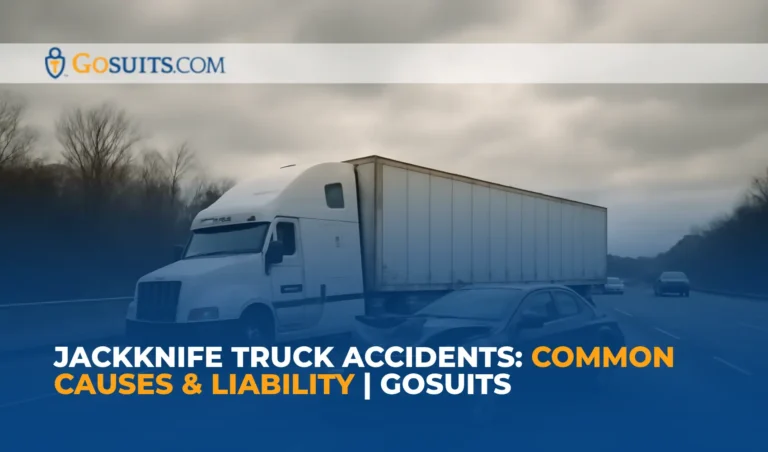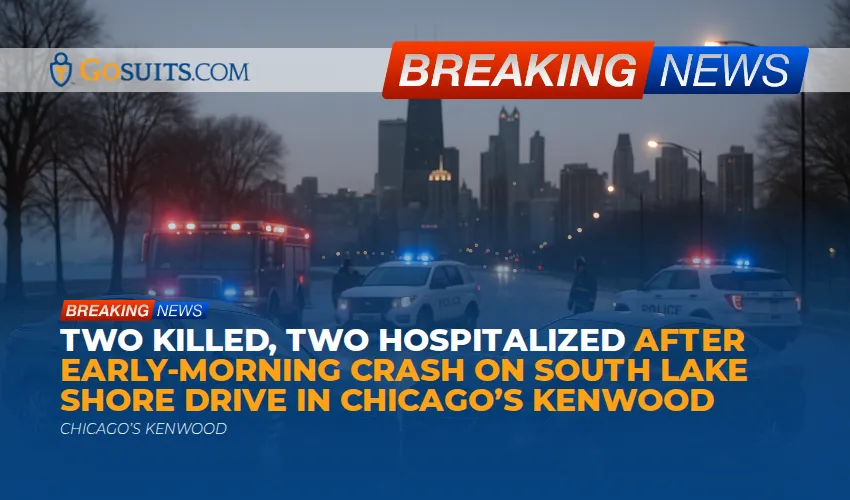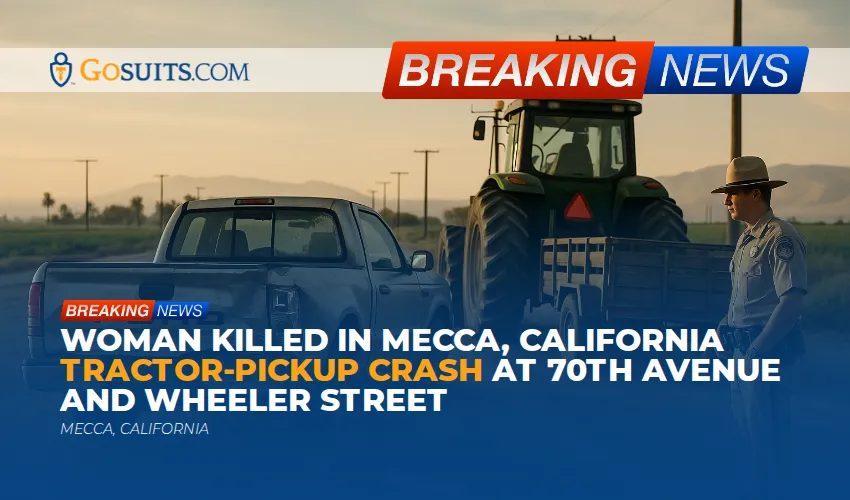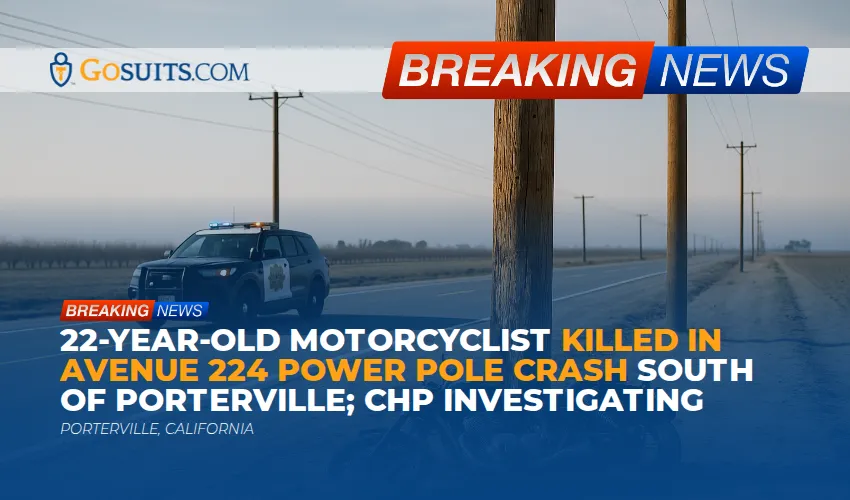- What is a jackknife truck accident?
- What makes tractor-trailers prone to jackknifing?
- What are the most common causes of jackknife truck accidents?
- Which federal trucking rules often matter in jackknife cases?
- Who is liable for a jackknife accident?
- How does comparative negligence work in Texas, California, and Illinois?
- What evidence helps prove a jackknife truck accident claim?
- What injuries and damages can you seek after a jackknife crash?
- What deadlines apply to jackknife truck accident claims?
- How do insurance rules and FMCSA financial responsibility affect your claim?
- How do settlements and lawsuits work in jackknife truck accident cases?
- What should you do right after a jackknife crash?
- Are black ice and bad weather automatic defenses to jackknife liability?
- Do improper braking and speeding increase jackknife risk?
- How do driver fatigue and hours-of-service violations factor into liability?
- How are cargo loading errors linked to jackknifing?
- What about defective brakes and maintenance lapses?
- Where do jackknife cases get filed in TX, CA, and IL?
- How can a jackknife truck accident lawyer help you?
- Why GoSuits for a jackknife truck accident case?
- Sources and references
What is a jackknife truck accident?
A jackknife truck accident happens when a tractor and its trailer fold toward each other at a sharp angle, often resembling the shape of a closing pocket knife. In a semi-truck jackknife or tractor-trailer jackknife crash, the trailer swings out of alignment with the tractor, usually during heavy braking, loss of traction, or a steering maneuver that exceeds available grip. These events can block multiple lanes in places like Houston, Dallas, Austin, San Antonio, Fort Worth, Los Angeles, San Diego, San Jose, San Francisco, Sacramento, Chicago, Aurora, Naperville, or Springfield, and the chain-reaction collisions can be severe.
Jackknifing is not a single cause event. It usually reflects a combination of physics and human decisions: speed for conditions, brake balance, load distribution, traction, and driver inputs. Understanding why the swing happened is central to identifying who is liable for a jackknife accident.
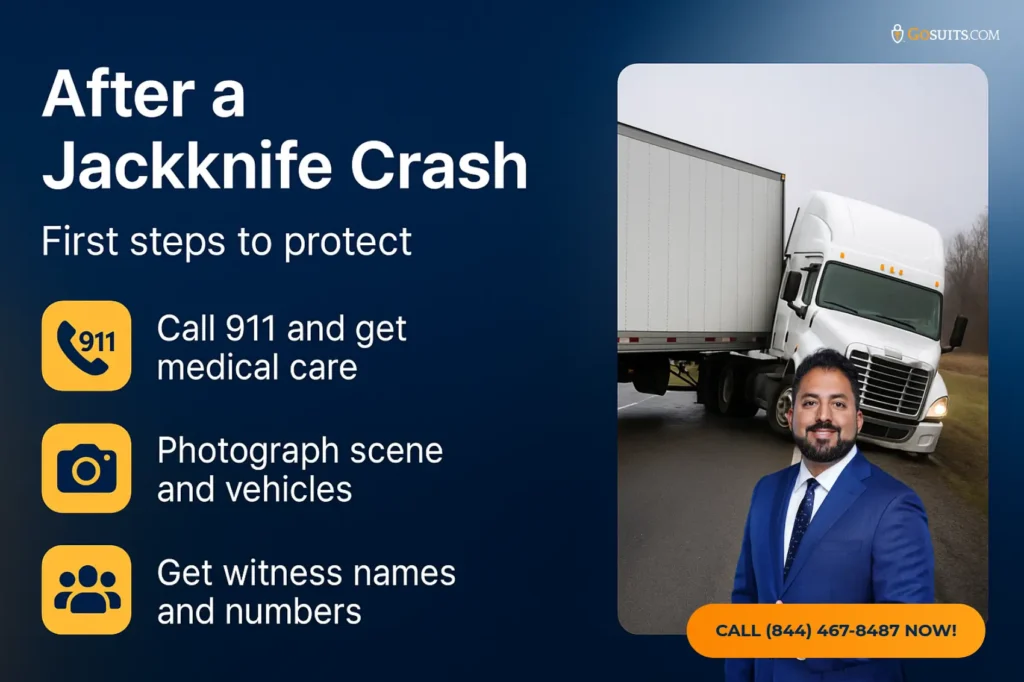
What makes tractor-trailers prone to jackknifing?
Articulated combination vehicles have two major sections linked by a fifth wheel. During braking or a sudden loss of traction, the trailer can push against the tractor and pivot around the hitch. Factors that heighten the risk include:
- Weight shift and brake imbalance – If the trailer brakes underperform or are improperly adjusted, the tractor may slow faster than the trailer, letting the trailer swing.
- Light or empty trailers – Lower trailer weight reduces tire grip and makes wheel lockup more likely on slick roads, contributing to a swing.
- Speed and following distance – Higher speed shortens the available time to react and often prompts harder braking that can precipitate a jackknife.
- Surface conditions – Rain, black ice, snow, and oil reduce traction. Federal rules specifically require commercial drivers to exercise extreme caution or stop when conditions are dangerous.
- Improper or shifted cargo – Unsecured or unbalanced freight changes the vehicle’s center of gravity and can amplify swing forces.
What are the most common causes of jackknife truck accidents?
Federal safety research highlights driver decisions, vehicle condition, and environment as overlapping contributors. In the Federal Motor Carrier Safety Administration’s Large Truck Crash Causation Study, investigators found that among large trucks involved in crashes, several associated factors were common: brake problems, traveling too fast for conditions, unfamiliarity with roadway, over-the-counter drug use, inadequate surveillance, and driver fatigue, among others. Brake problems were noted in about 29 percent of the trucks studied, and traveling too fast for conditions in about 23 percent. These are associated factors, not sole causes, but they align closely with jackknife mechanisms (FMCSA LTCCS).
Typical jackknife triggers include:
- Improper braking – Panic braking, hard braking on curves, or braking when drive wheels are unloaded can induce a swing.
- Speeding or driving too fast for conditions – On wet or icy pavement, even legal speeds may be unsafe for a heavy combination unit.
- Driver fatigue – Fatigue slows reactions and leads to poor speed and spacing decisions that force abrupt braking later.
- Improper cargo loading – Off-center mass or unsecured loads shift under braking, upsetting stability.
- Defective or poorly maintained brakes – Out-of-adjustment brakes or uneven braking force between tractor and trailer increase jackknife risk.
- Black ice and reduced traction – Invisible ice patches can instantly eliminate grip. Drivers must slow substantially or stop when necessary under federal rules.
- Following too closely – Tailgating reduces the margin needed to brake smoothly in a semi-truck jackknife scenario.
Which federal trucking rules often matter in jackknife cases?
Federal Motor Carrier Safety Regulations apply to interstate commercial carriers nationwide, including those operating in TX, CA, and IL. In a jackknife truck accident, investigators and attorneys often look to whether key rules were followed:
- Hazardous conditions – slow or stop – Drivers must use extreme caution and reduce speed, and discontinue driving if conditions become sufficiently dangerous (49 CFR 392.14).
- Hours-of-service limits – HOS limits help prevent fatigue-related errors that can lead to hard braking and loss of control (49 CFR 395.3; see also FMCSA HOS summary).
- Brake performance and maintenance – Trucks must have operable service brakes, properly balanced systems, and must be systematically inspected and maintained (49 CFR 393.40; 49 CFR 396.3).
- Driver inspections and reports – Pre-trip and post-trip inspection duties can reveal brake or tire issues that contribute to jackknifing (49 CFR 396.13; 49 CFR 396.11).
- Cargo securement – Loads must be properly secured to avoid shifts that destabilize the trailer (49 CFR 393.100).
- Accident register – Carriers must maintain an accident register and related materials, which often aid in litigation (49 CFR 390.15).
- Log and ELD records retention – Carriers must retain records of duty status for six months, which can corroborate fatigue or speeding in a jackknife event (49 CFR 395.8).
Who is liable for a jackknife accident?
Liability depends on the facts, but in many jackknife accident liability analyses, the following defendants are evaluated:
- The truck driver – for negligent speed, following distance, improper braking, ignoring hazardous weather, or violating HOS rules.
- The motor carrier – under respondeat superior for the driver’s negligence and directly for negligent hiring, training, supervision, dispatch pressure, maintenance programs, or log auditing lapses.
- The cargo loader or shipper – if improper loading or securement contributed to a semi-truck jackknife.
- The maintenance contractor – if outsourced brake or tire service was substandard.
- The vehicle or component manufacturer – if defective brakes or other components contributed. Product claims require careful technical proof.
- Other motorists – a sudden cut-off or unsafe lane change can create an emergency that still leaves the truck party partially liable if speed or following distance was unsafe.
Multiple parties may share responsibility. Comparative negligence rules in Texas, California, and Illinois determine how fault percentages affect recovery, discussed below.
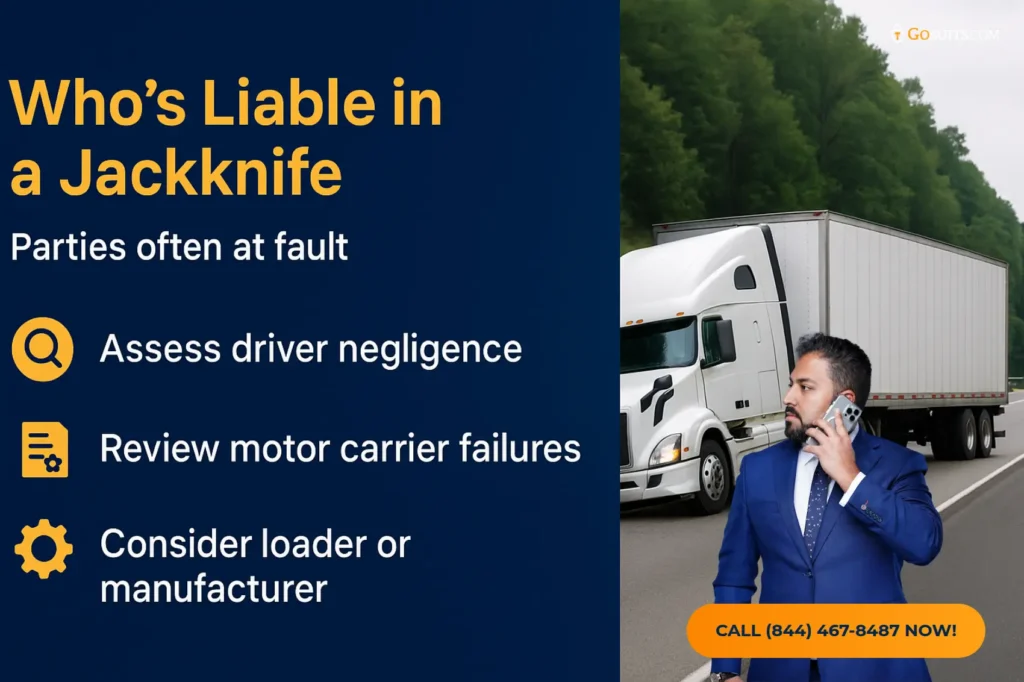
How does comparative negligence work in Texas, California, and Illinois?
Comparative negligence reduces recovery by a plaintiff’s share of fault. Each state applies it differently in civil truck accident cases:
- Texas – You cannot recover if you are more than 50 percent responsible; otherwise, damages are reduced by your percentage. See Texas proportionate responsibility statute (Tex. Civ. Prac. & Rem. Code § 33.001).
- California – California follows pure comparative negligence, allowing recovery even if a plaintiff is 99 percent at fault, reduced by that percentage. The California Supreme Court adopted this in Li v. Yellow Cab Co. (13 Cal.3d 804), and California Civil Code recognizes general negligence duties (Civ. Code § 1714(a)).
- Illinois – Modified comparative negligence with a 51 percent bar. If you are more than 50 percent at fault, you cannot recover; otherwise, damages are reduced by your percentage (735 ILCS 5/2-1116).
In all three states, a defendant may argue that a sudden stop, a weather hazard, or another driver contributed. Your jackknife truck accident lawyer will examine ELD data, dashcam footage, and physical evidence to allocate fault accurately.
What evidence helps prove a jackknife truck accident claim?
Timely evidence collection is critical in a tractor-trailer jackknife crash. Important materials include:
- Electronic logs and telematics – ELD records, ECM speed and braking data, GPS, and dispatch records to evaluate speed, hours, and driver behavior. Carriers must retain certain HOS records for six months (49 CFR 395.8).
- Maintenance and inspection records – Systematic maintenance files, brake adjustment readings, and periodic inspection reports required by FMCSA (49 CFR 396.3; 49 CFR 396.11; 49 CFR 396.13).
- Cargo documents – Bills of lading, weight tickets, and load plans showing whether weight distribution or securement complied with rules (49 CFR 393.100).
- Accident register and internal reports – Carriers must maintain an accident register and related documents that can include post-crash assessments (49 CFR 390.15).
- Scene evidence – Photographs, dashcam video, skid and yaw marks, damage profiles, and roadway friction data to model the jackknife dynamics.
- Law enforcement reports – Police diagrams, citations, and witness statements from the crash scene.
- Meteorological records – Weather archives for black ice conditions, rainfall, or wind gusts at the time of the crash.
Courts can sanction parties who fail to preserve relevant evidence once litigation is reasonably anticipated, including electronically stored information under Federal Rule of Civil Procedure 37(e) (FRCP 37(e)).
What injuries and damages can you seek after a jackknife crash?
Jackknife crashes can involve multi-vehicle pileups, underrides, or rollovers, often causing severe injuries. In a civil personal injury or wrongful death claim arising from a commercial truck accident, recoverable damages may include:
- Medical expenses – emergency care, hospitalization, surgeries, therapy, and future medical needs.
- Lost income and reduced earning capacity – time missed from work and long-term vocational impact.
- Pain, suffering, and loss of enjoyment – non-economic losses recognized by state law.
- Property damage – vehicle repairs or total loss.
- Wrongful death damages – funeral costs, loss of financial support, and companionship, pursuant to state statutes discussed below.
- Potential punitive damages – when permitted by state law and supported by evidence of egregious conduct.
Standards for punitive awards vary. For example, Texas requires clear and convincing evidence of fraud, malice, or gross negligence, and imposes statutory limitations (Tex. Civ. Prac. & Rem. Code ch. 41). California allows punitive damages for oppression, fraud, or malice under the Civil Code (Civ. Code § 3294).
What deadlines apply to jackknife truck accident claims?
Act quickly to protect your rights. Time limits can be short and vary by jurisdiction:
- Texas – Generally two years for personal injury and wrongful death (Tex. Civ. Prac. & Rem. Code § 16.003), with notice rules for claims against government entities (typically within six months) (§ 101.101).
- California – Generally two years for personal injury or wrongful death (Cal. Code Civ. Proc. § 335.1), with government claims typically within six months (Gov. Code § 911.2).
- Illinois – Generally two years for personal injury (735 ILCS 5/13-202), with a one-year limit for claims against many local public entities (745 ILCS 10/8-101).
- Federal tort claims – If a federal vehicle is involved, special procedures and time limits apply under the Federal Tort Claims Act, including a two-year administrative claim and six months to file suit after a final denial (28 U.S.C. § 2401(b); 28 U.S.C. § 2675).
Missing a deadline can bar your claim. Speak with a qualified attorney promptly.
How do insurance rules and FMCSA financial responsibility affect your claim?
Most interstate motor carriers must maintain minimum financial responsibility to cover public liability for injury and property damage. Federal regulations set minimums that vary by cargo type. For general freight, the minimum is usually $750,000; hazardous materials require higher limits (49 CFR 387.9). Proof of financial responsibility appears on forms like the MCS-90 endorsement (49 CFR 387.15).
In practice, a jackknife truck accident often triggers:
- Primary liability coverage for the motor carrier and its driver.
- Excess or umbrella coverage for larger losses.
- Cargo or shipper policies if loading contributed to the crash.
Understanding the insurance stack and whether FMCSA filings apply helps frame settlement negotiations and litigation strategy in statewide cases in TX, CA, and IL.
How do settlements and lawsuits work in jackknife truck accident cases?
Every case is unique, but many follow this path:
- Investigation and preservation – Your attorney sends preservation letters to the carrier and others to protect logs, ELD data, dashcam video, maintenance files, and cargo records.
- Insurance claim – A claim is presented with evidence of liability and damages. Negotiations may begin early, especially when violations of FMCSA rules are documented.
- Filing a lawsuit – If settlement talks stall, your attorney files suit in the appropriate court. Discovery obtains records, depositions, and expert analyses, including crash reconstruction and brake system evaluations.
- Motions and trial – Liability disputes, comparative negligence, and damages are tried if not resolved. Experienced trial counsel is important given the technical nature of a tractor-trailer jackknife crash.
- Settlement – Many cases resolve before trial when the facts are clear and damages are well documented. No outcome can be promised.
What should you do right after a jackknife crash?
Your safety comes first. After that, steps that often help a future claim include:
- Call 911 and seek medical care even if injuries seem minor.
- Photograph the scene, vehicle positions, skid marks, road conditions, and the truck’s DOT and USDOT numbers if it is safe to do so.
- Get witness information and note any cameras that may have recorded the crash.
- Avoid detailed statements to insurance adjusters before speaking with a lawyer.
- Consult a commercial truck accident attorney near you to protect your rights and deadlines in Texas, California, or Illinois.

Are black ice and bad weather automatic defenses to jackknife liability?
No. Federal rules require commercial drivers to use extreme caution and reduce speed or stop when conditions are hazardous (49 CFR 392.14). If a driver continued at highway speed on black ice and had to brake sharply, resulting in a jackknife, a jury may find that speed and decision-making were negligent despite the weather. Conversely, if a driver slowed significantly or stopped in a safe location and was struck by another vehicle, fault may be allocated differently. Weather is a factor, not a blanket defense.
Do improper braking and speeding increase jackknife risk?
Yes. Jackknifing commonly follows abrupt or uneven braking, especially at unsafe speeds for the road conditions. The FMCSA causation research found that traveling too fast for conditions was a frequently associated factor in large truck crashes, while brake problems were also prevalent in the study sample (FMCSA LTCCS). A truck driver’s duty is to maintain safe following distances and modulate braking. If onboard data show high speed followed by hard brake application on a wet or icy roadway, those facts often support liability.
How do driver fatigue and hours-of-service violations factor into liability?
Fatigue slows reaction time and impairs judgment, increasing the chance that a driver will brake late and hard, which can trigger a jackknife. HOS rules limit driving time and require rest breaks to reduce fatigue risks (49 CFR 395.3). If electronic logs indicate violations or a pattern of pushing maximum hours, those facts can support negligence claims against both the driver and the carrier, including negligent supervision or dispatch pressure. In some cases, carriers may also face corporate liability if policies encourage unsafe schedules.
How are cargo loading errors linked to jackknifing?
Improper cargo loading can destabilize a tractor-trailer. Weight that is too far to the rear reduces traction on the tractor drive axles, increasing the likelihood of wheel lockup and swing during braking. Loads that are unbalanced side to side or inadequately secured can shift, changing the center of gravity mid-maneuver. Federal cargo securement rules establish minimum standards (49 CFR 393.100). Where a shipper or loader controlled loading, liability may extend beyond the motor carrier if violations or negligent practices are shown.
What about defective brakes and maintenance lapses?
Jackknife dynamics often expose brake problems. Uneven brake force between tractor and trailer, out-of-adjustment slack adjusters, worn drums, or air system leaks can cause the trailer to push forward during braking. Federal rules require properly functioning service brakes (49 CFR 393.40) and a systematic maintenance program (49 CFR 396.3). If maintenance records are missing, incomplete, or show skipped inspections, that can support negligence claims. If a design or manufacturing defect is suspected, product liability may be pursued with appropriate technical proof.
Where do jackknife cases get filed in TX, CA, and IL?
Venue and jurisdiction depend on where the crash occurred and the defendants’ contacts with the state. Examples:
- Texas – Cases arising in Houston, Dallas, Austin, San Antonio, or Fort Worth may be filed in county district courts or in federal court if jurisdictional requirements are met.
- California – Crashes in Los Angeles, San Diego, San Jose, San Francisco, or Sacramento proceed in superior courts or federal court when appropriate.
- Illinois – Cases from Chicago, Aurora, Naperville, or Springfield may be filed in circuit courts or federal court. Illinois’ comparative negligence and limitations rules will apply to state law claims.
Interstate carriers can often be sued where the crash occurred or where they do business. Choice-of-law issues sometimes arise when multiple states are involved. A commercial truck accident attorney can navigate these rules and protect your claims statewide or near you.
How can a jackknife truck accident lawyer help you?
Heavy truck cases are evidence intensive and adversarial. A jackknife truck accident lawyer can:
- Secure and analyze data fast – obtain ELD, ECM, dashcam, and telematics data before it is overwritten.
- Preserve physical evidence – orchestrate inspections of the tractor-trailer, brakes, and cargo securement.
- Identify all liable parties – driver, motor carrier, shipper, loader, maintenance vendor, and manufacturers.
- Apply federal and state rules – use FMCSA regulations and comparative negligence laws in TX, CA, and IL to build a strong liability case.
- Quantify your losses – coordinate medical and vocational assessments to support damages.
- Negotiate or try the case – pursue fair settlements or take your case to trial when needed.
These cases are not typically suited for self-representation. The carrier and its insurer will act quickly to minimize exposure. Early legal help levels the playing field and protects your rights.
What if my crash involved black ice on I-35 in Texas or I-80 in Illinois?
Drivers must reduce speed dramatically or stop when conditions are dangerous. Evidence that the driver maintained highway speed into a known icy stretch, contrary to 49 CFR 392.14, can support liability. Weather is considered with all other facts, including traffic speed, advisory warnings, and whether the driver was fatigued or following too closely.
How are wrongful death claims handled after a fatal jackknife crash?
When a jackknife truck accident causes a death, state wrongful death laws govern who may bring claims and what damages are available:
- Texas – The wrongful death statute allows eligible family members to sue and also recognizes survival claims (Tex. Civ. Prac. & Rem. Code ch. 71).
- California – Heirs and certain dependents may bring claims under the Code of Civil Procedure (CCP § 377.60).
- Illinois – Claims proceed under the Illinois Wrongful Death Act and related statutes (see 740 ILCS 180 et seq.).
Wrongful death cases require sensitive handling and strong documentation. Filing timelines can be short, and key evidence may be in the carrier’s possession, so quick legal action is important.
What state-specific trucking rules might help prove my case?
Federal rules generally govern interstate carriers, but state statutes and jury instructions shape negligence and damages:
- Texas – Proportionate responsibility and exemplary damages rules can influence strategy (§ 33.001; ch. 41).
- California – Pure comparative negligence from Li and general negligence under Civil Code § 1714 can support liability arguments even if both sides share fault (Li v. Yellow Cab; Civ. Code § 1714).
- Illinois – The 51 percent bar under 735 ILCS 5/2-1116 is central in multi-vehicle pileups where multiple drivers contributed (735 ILCS 5/2-1116).

How do I find help near me in TX, CA, or IL?
Look for a commercial truck accident attorney with a track record in complex injury litigation across Texas, California, and Illinois. Local knowledge of courts in Houston, Dallas, Austin, San Antonio, Fort Worth, Los Angeles, San Diego, San Jose, San Francisco, Sacramento, Chicago, Aurora, Naperville, or Springfield can be valuable. Ask about rapid evidence preservation, familiarity with FMCSA rules, and trial readiness.
Why GoSuits for a jackknife truck accident case?
When a jackknife truck accident upends your life, a free consultation can clarify your options and timing, especially with short deadlines and evidence that can be lost. GoSuits represents people in personal injury and wrongful death cases arising from commercial trucking crashes, including jackknife collisions, statewide in Texas, California, and Illinois.
We combine seasoned litigators with a technology-driven approach. Our exclusive proprietary software streamlines evidence intake, ELD data review, document management, and case analytics so we can move from investigation to action quickly. That innovation reflects our leadership in bringing modern tools to transportation injury litigation.
Even with advanced technology, your case is personal. We assign a designated attorney to every client. We do not use case managers, and every client has unfettered access to their attorney for updates, strategy, and preparation. Over 30 years of combined experience and trial-tested advocacy inform every step, from negotiation to courtroom presentation.
Our past results include seven and eight-figure resolutions in catastrophic injury and wrongful death matters. Results depend on facts and law and cannot be predicted, but our history shows steady, methodical work toward meaningful outcomes. See representative matters at https://gosuits.com/prior-cases/?.
Practice areas include commercial truck and bus crashes, rideshare and delivery vehicle collisions, wrongful death, traumatic brain and spinal injuries, and complex multi-defendant roadway cases. If you or a family member was hurt in a jackknife truck accident in TX, CA, or IL, we invite you to contact us for a free consultation to discuss next steps, preservation of evidence, and your potential claims.
Sources and references
- FMCSA, Large Truck Crash Causation Study – Analysis Brief and resources: https://www.fmcsa.dot.gov/safety/research-and-analysis/large-truck-crash-causation-study
- 49 CFR 392.14 – Hazardous conditions; extreme caution: https://www.law.cornell.edu/cfr/text/49/392.14
- 49 CFR 395.3 – Maximum driving time for property-carrying vehicles: https://www.law.cornell.edu/cfr/text/49/395.3
- 49 CFR 395.8 – Driver’s record of duty status; retention: https://www.law.cornell.edu/cfr/text/49/395.8
- 49 CFR 393.40 – Brake systems: https://www.law.cornell.edu/cfr/text/49/393.40
- 49 CFR 393.100 – General cargo securement rules: https://www.law.cornell.edu/cfr/text/49/393.100
- 49 CFR 396.3 – Inspection, repair, and maintenance: https://www.law.cornell.edu/cfr/text/49/396.3
- 49 CFR 396.11 – Driver vehicle inspection reports: https://www.law.cornell.edu/cfr/text/49/396.11
- 49 CFR 396.13 – Driver inspection: https://www.law.cornell.edu/cfr/text/49/396.13
- 49 CFR 390.15 – Assistance in investigations and accident register: https://www.law.cornell.edu/cfr/text/49/390.15
- 49 CFR 387.9 – Financial responsibility minimum levels: https://www.law.cornell.edu/cfr/text/49/387.9
- 49 CFR 387.15 – MCS-90 endorsement: https://www.law.cornell.edu/cfr/text/49/387.15
- Texas proportionate responsibility – Tex. Civ. Prac. & Rem. Code § 33.001: https://statutes.capitol.texas.gov/Docs/CP/htm/CP.33.htm
- Texas limitations – Tex. Civ. Prac. & Rem. Code § 16.003: https://statutes.capitol.texas.gov/Docs/CP/htm/CP.16.htm
- Texas government claims notice – Tex. Civ. Prac. & Rem. Code § 101.101: https://statutes.capitol.texas.gov/Docs/CP/htm/CP.101.htm#101.101
- California negligence – Civ. Code § 1714(a): https://leginfo.legislature.ca.gov/faces/codes_displaySection.xhtml?sectionNum=1714.&lawCode=CIV
- California comparative negligence – Li v. Yellow Cab Co., 13 Cal.3d 804: https://www.courtlistener.com/opinion/1186761/li-v-yellow-cab-co/
- California limitations – Cal. Code Civ. Proc. § 335.1: https://leginfo.legislature.ca.gov/faces/codes_displaySection.xhtml?sectionNum=335.1.&lawCode=CCP
- California Government Claims Act – Gov. Code § 911.2: https://leginfo.legislature.ca.gov/faces/codes_displaySection.xhtml?sectionNum=911.2.&lawCode=GOV
- Illinois modified comparative negligence – 735 ILCS 5/2-1116: https://www.ilga.gov/legislation/ilcs/fulltext.asp?DocName=073500050K2-1116
- Illinois limitations – 735 ILCS 5/13-202: https://www.ilga.gov/legislation/ilcs/fulltext.asp?DocName=073500050K13-202
- Illinois Tort Immunity Act – 745 ILCS 10/8-101: https://www.ilga.gov/legislation/ilcs/fulltext.asp?DocName=074500100K8-101
- Texas wrongful death – Tex. Civ. Prac. & Rem. Code ch. 71: https://statutes.capitol.texas.gov/Docs/CP/htm/CP.71.htm
- California wrongful death – CCP § 377.60: https://leginfo.legislature.ca.gov/faces/codes_displaySection.xhtml?sectionNum=377.60.&lawCode=CCP
- Federal Rule of Civil Procedure 37(e) – ESI sanctions: https://www.law.cornell.edu/rules/frcp/rule_37
- FTCA time limits – 28 U.S.C. § 2401(b) and § 2675: https://www.law.cornell.edu/uscode/text/28/2401 and https://www.law.cornell.edu/uscode/text/28/2675
